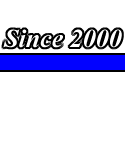

 |
|
|
Main
Video Games Interactive
Forums Hosted Sites
|
By Johnny Undaunted Introduction: Ah yes - the original arcade version of Double Dragon. Double Dragon was released in Japan by Technos themselves, but Taito (which had a pretty strong relationship with Technos) published the game worldwide. In this version, you control one of the two Double Dragon brothers (whose names are Billy and Jimmy or Hammer and Spike depending on who's telling the story). It is your mission to save the brothers' girlfriend, Marian, from the clutches of the Black Warriors, the gang of Big Boss Willy.
Graphics: A
While Double Dragon may look primitive compared to more recent games, back in
1987 the graphics were pretty good. The graphics were a major improvement
over Renegade (Technos' previous beatemup). All the characters were well
animated for their time. While there is not much variety in the game's enemies (Williams
and Roper appear 75 percent of the time, with occasional appearances by Linda, Abobo
or one of the three bosses), they have multiple palettes to give the enemies a
more colorful variety. The four stages are well-designed, featuring a fair
share of obstacles. There are also minor details to look for like wanted
posters featuring one of the three bosses (Bolo, Jeff or Willy), an ad for Nekketsu Kouha Kunio-kun (the original Japanese version of Renegade)
and the cat on the dumpster.
Sound: A The music by Kazunaka Yamane is still awesome, even by today's standards. The game opens with the classic Double Dragon theme and the City Slum theme. The music kind of goes down in quality after the end of Mission 2, but the later tracks aren't that bad. The sounds were very realistic for the time and voices consist of the usual grunts and yells (no dialogue like there is in Renegade).
Enemies: B+ The generic members of the Black Warriors gang consist of Williams, Roper, Linda and Abobo. There are few differences between Williams and Roper (except that Roper likes to carry more weapons). Williams is the generic thug who punches Marian in the game's intro. Roper is another thug who wears spike in his shoulders. Linda is a female dominatrix with blonde, puffy hair who likes to carry a whip. She's the weakest enemy in the game and doesn't appear often. Abobo is a giant who likes to throw his enemies around. He is the only enemy that can't be grabbed. The bosses consist of Bolo, Jeff and Willy. Bolo is basically Abobo with a Mohawk. Jeff is an evil head-swapped version of Billy and Jimmy (probably a former pupil) and Willy, the Big Boss, is just a guy with a machine gun. The enemies in this version are pretty smart (they walk away when you're facing them), but can be easily fooled by the elbow smash. If both players beat the game, a contest will be held to see who wins Marian, which is a nice bonus feature.
Weapons: B Unlike the home versions, weapons can be carried from one fight to another. There are three kinds of weapons in Double Dragon: conventional weapons, projectile weapons and large objects. There are two conventional weapons: baseball bats (carried by Roper and Williams) and Whips (carried only by Linda). Unfortunately, they aren't very effective in this version. Projectile weapons are also used by Williams and Roper. They consist of knives and explosives. Knives are the most useful weapon in the game because they can take away half of the enemies' health. Explosives are more damaging but less effective because they don't explode on contact. Large objects like oil drums, boxes and rocks are thrown by Abobo, Bolo and Roper.
Controls and Moves: B There are three buttons in Double Dragon: punch, kick and jump. Wiggling the joystick twice to the left or right will make your character do a head butt. Pressing jump punch will make Billy do the invisible elbow smash, while jump and kick will do a back-sidekick. Pressing punch in mid-air will do a jump kick to the right and pressing kick in mid-air jump kicks to the left, which doesn't make sense. Approaching your enemy while he or she is squatting will allow you to grab him or her by the head. If you press kick you'll hit your opponent with your knee and if you press punch you will throw him or her. It doesn't work with Abobo or Bolo. This assortment of moves is pointless because most of the enemies are easily tricked by the elbow smash.
Modes: N/A Since this is an arcade game, there is not much in play modes besides choosing to go solo or with another player. However, if you own the machine, you adjust the number of lives, points for extra lives and difficulty level. As mentioned earlier, if two players manage to beat Willy, they must fight each other to see who wins Marian.
Conclusion/Overall: A Despite all the home versions, there is no arcade-perfect port of the original Double Dragon. While some of the 8-bit versions (NES, Game Boy and SMS versions) were decent on their own, they can't compare to the original. The Genesis version and Lynx version (the former developed by Ballistic and the latter by Telegames) suck. The only way to enjoy this is to play it emulated via Mame, or buy the Jamma board and a cabinet to play it. It's the best version of the original, despite some of its flaws.
|
||||||||||||||||